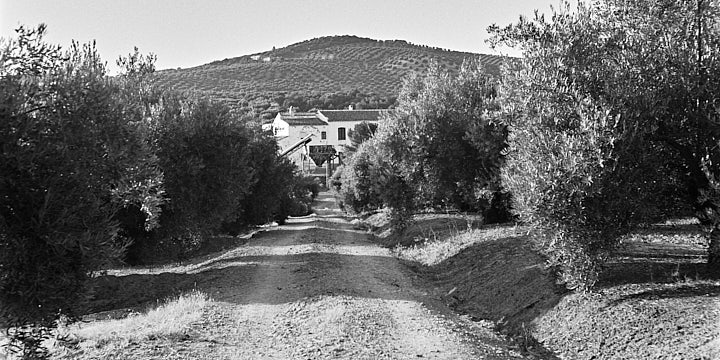When I got the Zeiss Ikon Ikoflex IIa 855/16, was keen to try it out. So, at the earliest opportunity, I took the camera, loaded it with Ilford FP4 film and took my two dogs on a photo walk on the Via Verde (web page in Spanish).
It was early morning, and it was going to be a hot day with a high of 37C. I came across an old Cortijo, a traditional rural dwelling similar to a British farmhouse. The Cortijo was clearly only used for the seasonal olive harvest, and there was an olive separating and sorting machine next to it. Most of the photos were taken here.
Below are all the photos from my first roll of film through the Ikoflex IIa. I used a Sekonik light meter to measure the light for the exposures.
Photo details
I took all the photos on this page using a Zeiss Ikon Ikoflex IIa 855/16 camera (Zeiss 75mm f3.5 fixed lens) with Ilford FP4 film.
The photos were digitised using a Nikon Z6 mirrorless digital camera with a Tokina AT-X Pro Macro 100mm f2.8 D lens and processed using Capture One software.
Click on any photo to see a larger version.
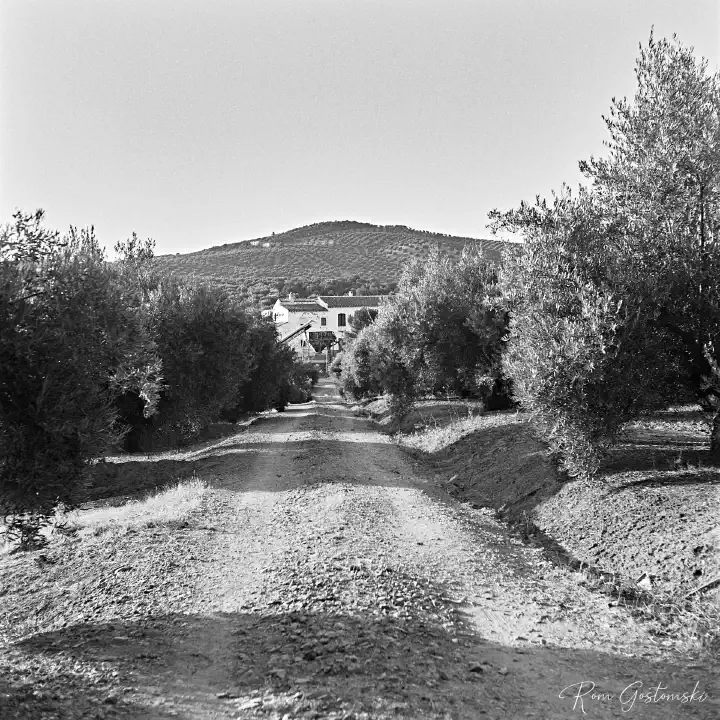
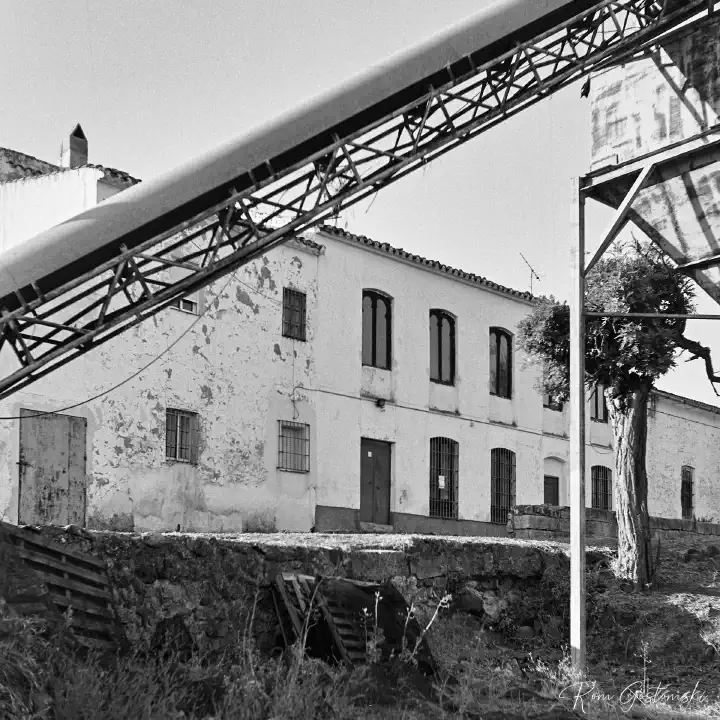

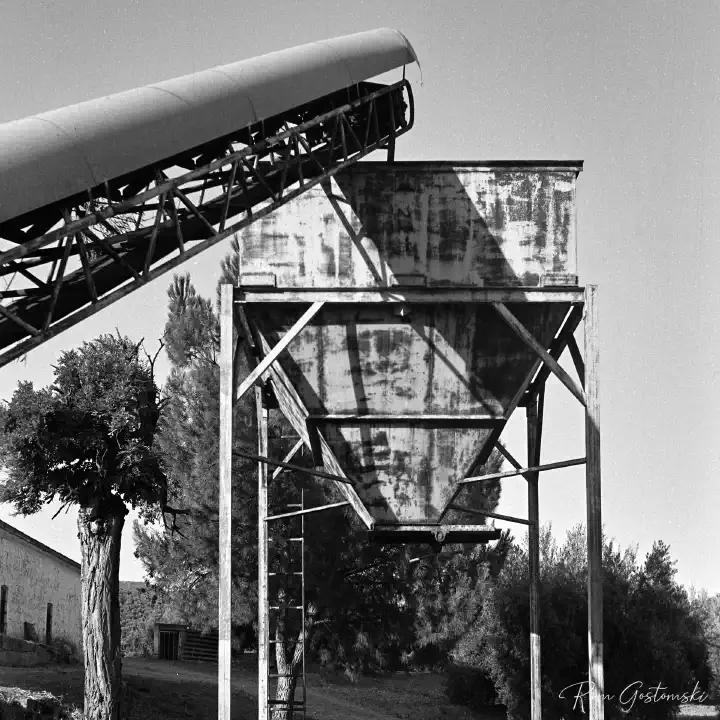
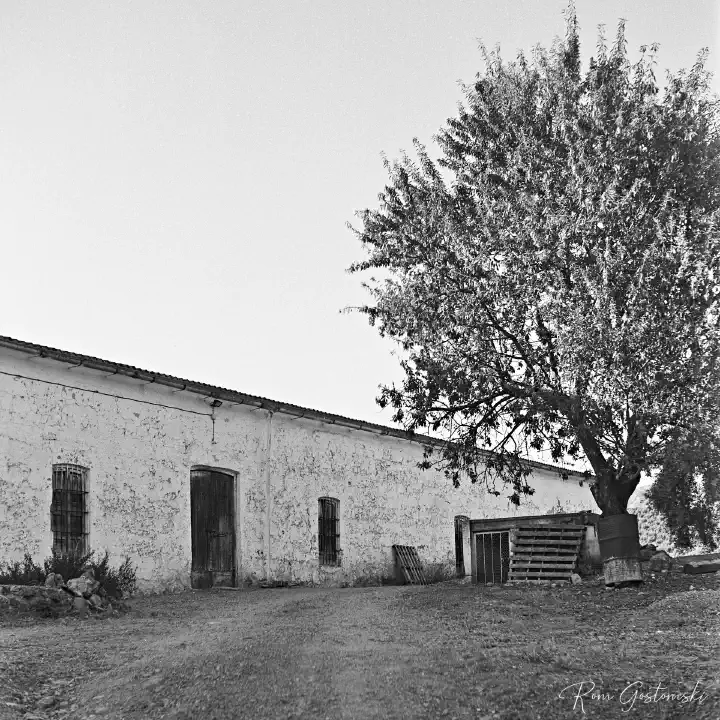
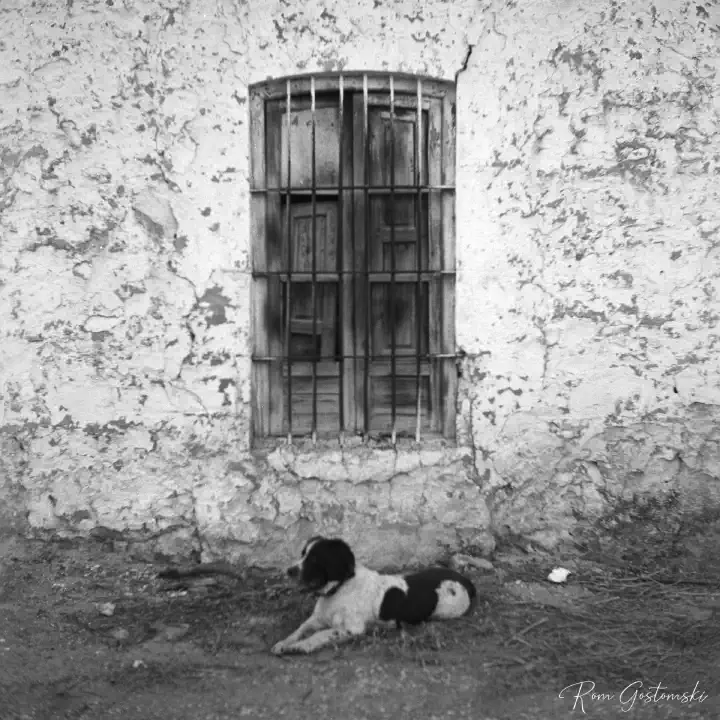
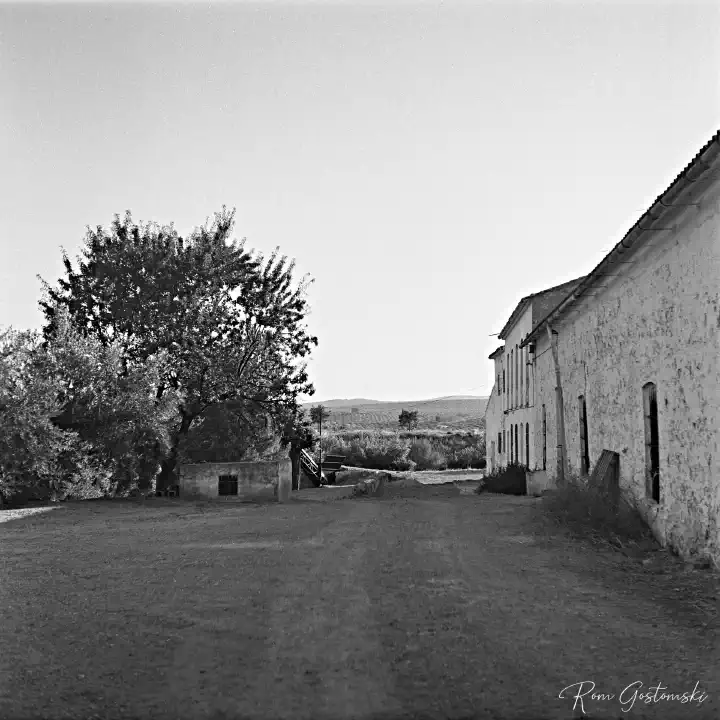
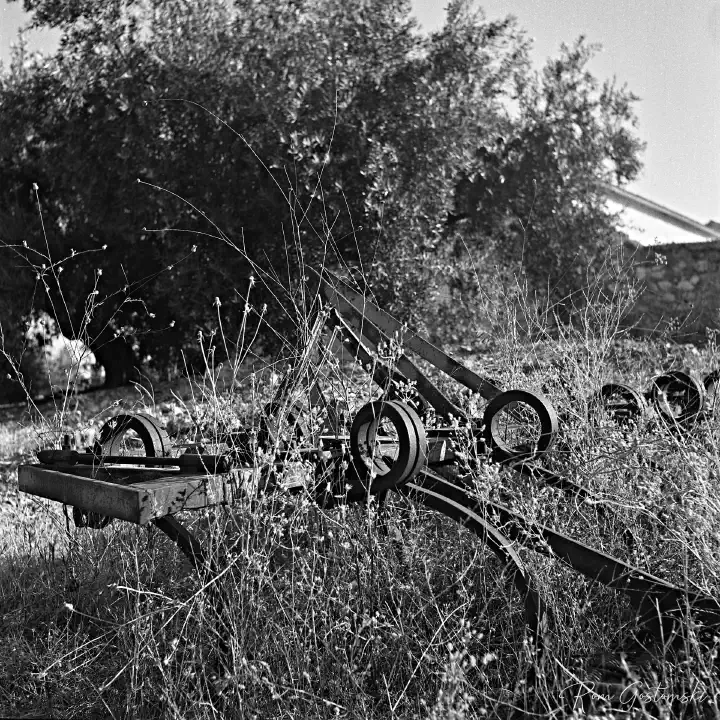
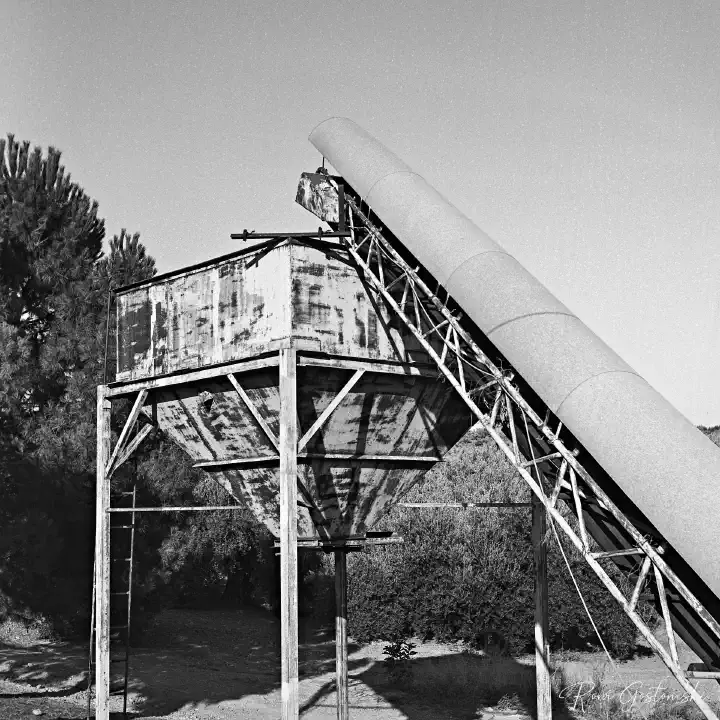
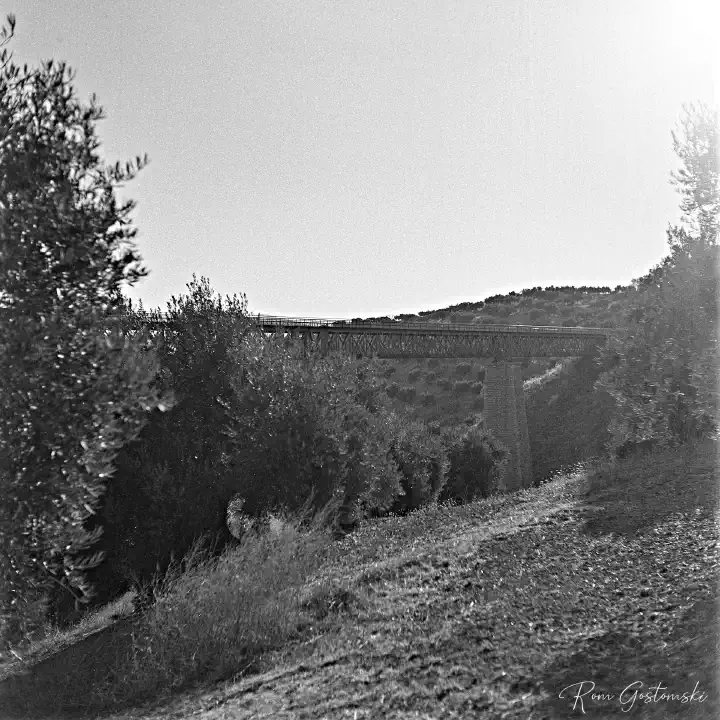
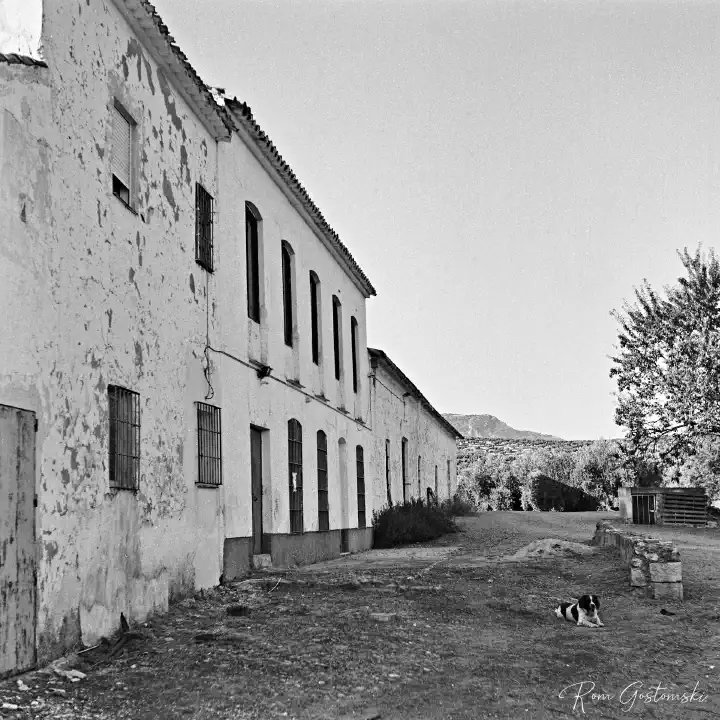
Conclusions
I’m very happy with the first roll of film I shot with Zeiss Ikoflex IIa 855/16. Above all, I enjoyed using the camera. Considering it was built around 1952, it worked very well and produced pretty good photos. To think I was using a camera with so much history was amazing.
I wasn’t too keen about the fairly short focus throw, more specifically, the slight stiffness in use. I totally missed focus on the sixth shot (Chester under the window). Hopefully, I shall get used to it.
The other thing was the sliders for the aperture and exposure time. These are very different from what I am used to. They don’t click into place for precise settings; instead, they are continuously variable, with numbers to provide rough estimates. On the plus side, they must be fairly accurate, as the exposures were all fairly spot on.
The lens produces sharp images, although the contrast is lower compared to more modern lenses. This is probably due to the lack of coatings. The lens struggles when shooting into the sun, as can be seen in the shot of the Via Verde viaduct.
